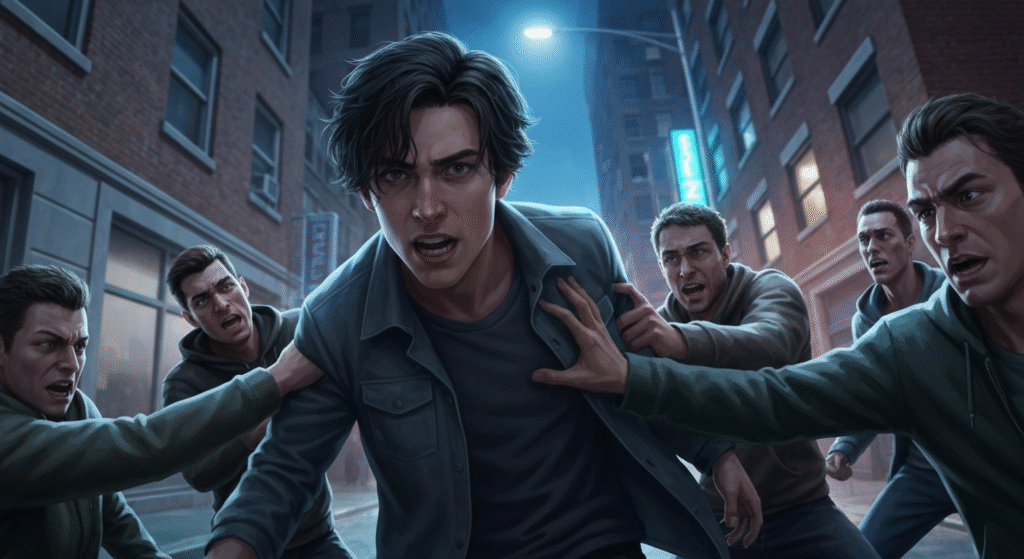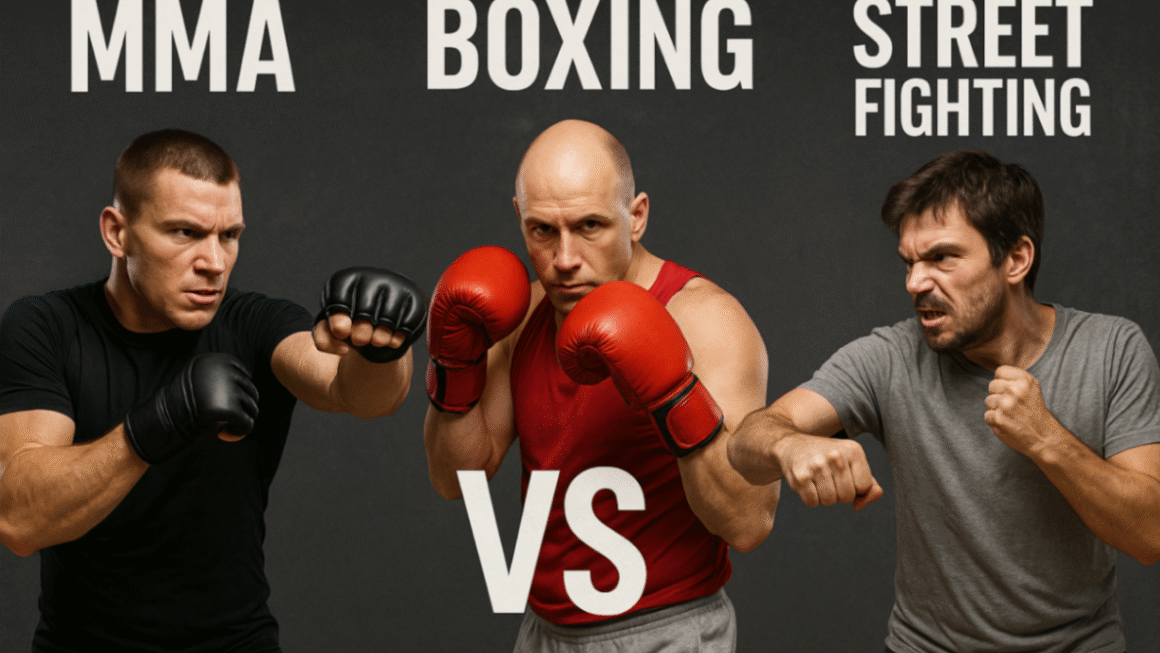Key Highlights
- Your top priority in any street fight against multiple attackers is to escape, not to win the fight.
- Effective self defense involves using your environment, such as obstacles, to create barriers and limit angles of attack.
- Avoid common mistakes like focusing on one person, which leaves you vulnerable to a serious injury from others.
- Certain martial arts, like Krav Maga, are specifically designed for real-world scenarios, including encounters with multiple assailants.
- Maintaining constant movement is crucial to prevent being surrounded and to create windows for a safe escape.
- Prioritize neutralizing the most immediate threat to quickly reduce the number of active attackers you face.
Introduction
Facing a single opponent in a street fight is a dangerous and unpredictable event. The danger multiplies exponentially when you are outnumbered. In these high-stakes situations, the rules of a fair fight do not apply, and your primary goal shifts from winning to surviving. This guide will explore practical strategies for self defense when confronted by more than one person. Understanding the right mindset, tactics, and martial arts principles can provide you with the tools necessary to de-escalate, defend, and find a path to safety.
Understanding the Risks of Facing Multiple Opponents

Confronting two or more people in a real street fight is exceptionally dangerous. The odds are heavily stacked against you, as multiple attackers can coordinate their assault, striking you from different angles simultaneously. This chaos makes it nearly impossible to defend against every blow, dramatically increasing your risk of sustaining a serious injury or worse.
Unlike a one-on-one encounter, you cannot focus your defense on a single individual. While you engage with one person, others are free to attack you from your blind spots. The sheer number of opponents means the threat level is significantly higher, and the situation can escalate to a life-threatening level in mere seconds.
Assessing the Danger and Your Environment
The fundamental difference between a one-on-one street fight and a group attack is the loss of control. In a single-opponent scenario, you can manage distance and focus your attention. Against a group, you must constantly be aware of multiple moving threats, which is a skill even a professional martial artist finds challenging. The dynamic changes from a duel to a battle for survival against overwhelming odds.
Your first step in any self defense situation is to rapidly assess your environment. Are there cars, tables, or pillars you can use as obstacles? Can you move into a narrow hallway or doorway that forces your attackers to come at you one at a time? Using your surroundings strategically is not just an advantage; it is a necessity for survival when outnumbered.
Look for immediate escape routes. Your goal is not to defeat everyone but to get away safely. Identifying a clear path out of the situation before the physical confrontation begins gives you a vital objective to work toward. This awareness can be the deciding factor between a narrow escape and a brutal outcome.
Psychological Impact of Being Outnumbered
The psychological impact of being surrounded can be paralyzing. The sudden rush of fear and adrenaline can cause you to freeze, making you an easy target. Acknowledging this potential for panic is the first step toward overcoming it. The ability to remain calm under extreme pressure is a critical mental skill that gives you a much better chance of thinking clearly and acting decisively.
An experienced martial artist knows that controlling your own emotional response is just as important as physical technique. Studies of real fights show that ego-driven anger often leads to predictable, telegraphed moves and poor decisions. Conversely, a mindset that is willing to do whatever it takes to survive—what some might call “crazy”—can be an advantage. This unpredictability can surprise and deter attackers.
Ultimately, your mental state dictates your physical response. By focusing on survival rather than pride, you can bypass the mental roadblocks that fear creates. This shift in perspective allows you to see opportunities for escape and defense that you might otherwise miss in a state of panic.
Common Mistakes in Multi-Opponent Street Fights

When facing multiple opponents, many untrained street fighters make critical errors that can lead to severe injuries. These mistakes often stem from a misunderstanding of the dynamics of a group attack and a reliance on instincts that work in a one-on-one fight but fail spectacularly here. The most common errors involve losing awareness and mismanaging space.
Effective self defense in these scenarios requires you to unlearn these common but dangerous habits. Recognizing these pitfalls is the first step toward developing a strategy that prioritizes mobility, awareness, and creating opportunities to escape. The following sections will break down these specific mistakes in greater detail.
Overcommitting and Losing Awareness
One of the most dangerous mistakes in multi-opponent street fighting is overcommitting to a single attacker. When you focus all your energy on trying to knock out or subdue one person, you lose awareness of the others. This tunnel vision creates a perfect opening for another assailant to attack you from the side or behind, often with devastating consequences. A trained martial artist knows to keep their head on a swivel.
This lack of awareness is a common theme in several critical errors. Instead of engaging in prolonged exchanges, your actions should be quick, disabling strikes aimed at creating space. The goal is to stun an attacker, not to finish them in a drawn-out brawl. Common mistakes include:
- Going to the ground: Never intentionally go to the ground. Grappling with one person makes you completely defenseless against the kicks and stomps of the others.
- Trying “fancy” moves: Complex techniques that require precision and time are impractical. Simple, powerful strikes to vulnerable targets like the eyes or groin are far more effective.
- Standing still: Remaining stationary allows the group to surround you easily.
Remember, every second you spend locked in with one opponent is a second you are not defending against the rest of the group. Your primary tool is awareness, and overcommitting effectively turns it off.
Misjudging Distance and Escape Options
Another fatal error in a group street fight is poor management of distance. Allowing attackers to get too close eliminates your ability to move and react. You must actively work to maintain enough distance to see all threats and avoid being grabbed or cornered. Failing to do so quickly closes off your avenues of escape.
Many people also fail to constantly scan for and move toward an escape route. It is easy to become consumed by the fight in front of you, but survival depends on your ability to disengage. The “happy ending” to a group assault is not winning; it is getting home safely. This requires a constant search for a way out. Crucial errors in this category are:
- Backing straight up: This can lead you into a corner or another attacker’s path. It is better to move laterally or at angles to break the group’s formation.
- Ignoring potential exits: You should always know where the nearest door, alley, or open space is. The fight should be a moving engagement that takes you closer to that exit.
- Letting an attacker get behind you: This is the most vulnerable position. Always try to keep the attackers in front of you.
Your ability to manage space and prioritize an escape route is a practical tactic that directly determines your chances of getting away from an attacker or group of them safely.
Effective Defensive Strategies for Outnumbered Situations
While the odds are daunting, effective defensive strategies do exist for outnumbered situations. The best strategy is not a single technique but a combination of principles focused on movement, environmental awareness, and threat management. The core of this approach is to avoid a direct, sustained fight and instead create windows of opportunity to escape.
Successful self defense against a group is about being smarter, not stronger. By applying proven martial arts concepts, you can disrupt the attackers’ coordination and turn the chaotic environment to your advantage. The following strategies will outline how to manage your position and prioritize threats to maximize your chances of survival.
Positioning, Movement, and Using Obstacles
Your positioning is your most powerful defensive tool. The goal is to never let yourself be surrounded. Use constant movement to keep all the attackers in a single line or cone in front of you. This tactic, often called “lining them up,” forces them to get in each other’s way if they want to reach you, effectively making you face only one person at a time.
Integrate your environment into your movement. Do not just run in an open space; use obstacles to your advantage. A car, a pillar, or a sturdy table can become a barrier that separates you from some of the attackers. This buys you precious seconds to deal with the most immediate threat or continue your escape. This is a core principle taught in many practical martial arts. Key tactics include:
- Circle and move laterally: Avoid moving backward in a straight line. Circling forces the attackers to constantly readjust their positions and prevents them from easily surrounding you.
- Place obstacles between you and them: Actively put objects in their path. For example, push a table over or move to the other side of a car.
- Use choke points: Move toward a narrow doorway or hallway where only one attacker can get through at a time.
This combination of dynamic movement and strategic use of obstacles is a practical and effective way to manage a group threat and create a path to safety.
Prioritizing Threats and Creating Escape Windows
When facing multiple threats, you cannot fight everyone at once. You must prioritize. Your attention should go to the most immediate danger. This is typically the closest person, the most aggressive individual, or anyone who might have a weapon. By neutralizing this primary threat quickly—with a fast, disabling strike—you can create temporary escape windows.
The goal is not to achieve a submission or knock someone out cold. A hard strike to a vulnerable area is enough to make one of the perpetrators pause, giving you the moment you need to move and re-evaluate. This “attack and move” strategy keeps you from getting bogged down and allows you to manage the group dynamically.
Each action you take should be to create or exploit these small windows of opportunity. Your strategy should be a fluid cycle of identifying a threat, neutralizing it just enough to create space, and then moving to a better position or toward an exit.
|
Threat Level |
Description |
Recommended Action |
|---|---|---|
|
Immediate Threat |
The closest attacker, or one who is actively striking or grabbing you. |
Quick, aggressive counter-attack to a vulnerable area (eyes, throat, groin). Create distance immediately after. |
|
Secondary Threat |
An attacker moving to flank you or who has a weapon. |
Reposition to face this threat while keeping others in view. Use an obstacle if possible. |
|
Tertiary Threat |
Attackers who are further away or less aggressive. |
Keep them in your peripheral vision. Do not engage unless they become an immediate threat. Focus on escape. |
Martial Arts Techniques and Skills for Multiple Assailants
Not all martial arts are created equal when it comes to the brutal reality of street fighting against a group. Traditional, sport-based, or overly complex styles often fail in such chaotic environments. The most effective systems are those built on principles of simplicity, aggression, and real-world applicability.
Systems like Krav Maga are specifically designed to handle such scenarios, emphasizing simultaneous defense and attack, environmental awareness, and an overriding focus on survival. Likewise, the philosophy of legends like Bruce Lee, who advocated for adapting techniques to the situation rather than adhering to rigid forms, is highly relevant. The key is practicality over presentation.
Styles Most Suited for Real Street Scenarios
The most effective systems for real-world street fighting are those that prepare you for the worst-case scenario, including multiple opponents. Krav Maga is often cited as a top choice because its entire curriculum is based on self-preservation in violent encounters. It teaches students to use aggressive counter-attacks, target vulnerable areas, and use any available object as a weapon.
A skilled martial artist practicing a reality-based system understands that “fancy moves don’t finish fights.” Simplicity is key when your brain is overloaded with stress and fear. The techniques must be instinctual, efficient, and brutally effective. The focus is never on a “fair fight” but on neutralizing threats as quickly as possible to facilitate an escape. Effective styles generally emphasize:
- Gross motor movements: These are simple, powerful movements that hold up under the stress of a real attack, unlike fine motor skills which degrade.
- Simultaneous block and strike: Combining defense and offense into one fluid motion saves time and keeps pressure on the attackers.
- Weapon defense and environmental fighting: Training includes how to defend against common weapons and how to use everyday objects for protection.
Physical & Mental Attributes That Give You an Edge
Beyond specific techniques, certain physical and mental attributes dramatically increase your chances of survival. Mentally, the ability to control fear and avoid being driven by ego is paramount. An attacker fueled by rage is predictable, whereas a defender who remains calm can think strategically. This gives you a much better chance to avoid severe injuries.
One of the most powerful mental attributes is a “survival mindset.” This is the unwavering commitment to do whatever is necessary to get away safely. It replaces fear with focused aggression and determination. On the physical side, attributes like speed and explosive power are more important than raw strength, as they allow for quick strikes and rapid movement. Key attributes for an edge include:
- Situational Awareness: The ability to constantly scan your surroundings and process multiple threats.
- Controlled Aggression: Using aggression as a tool to create openings, not as an uncontrolled emotional reaction.
- Cardiovascular Endurance: The ability to keep moving, striking, and running without gassing out quickly is critical for escape.
Developing these mental and physical skills is just as important as practicing punches and kicks.
Conclusion
In conclusion, navigating a street fight against multiple attackers requires not just physical skills but also mental preparation and strategic awareness. Understanding your environment, assessing the risks, and avoiding common mistakes can significantly enhance your chances of coming out unscathed. By focusing on effective defensive strategies and the right martial arts techniques, you can better position yourself to prioritize threats and create escape opportunities. Always remember that the primary goal in such situations is to protect yourself and find a way to safety. If you’re looking to deepen your knowledge and skills in self-defense, consider booking a free consultation with an expert to learn more about practical strategies tailored for real-life scenarios.
Frequently Asked Questions
Has anyone ever successfully fought off several attackers in real life?
Yes, there are documented cases where individuals, often a trained martial artist or highly experienced street fighters, have fought off multiple attackers. Success usually involves exploiting surprise and mobility to avoid serious injury, giving them a much better chance to survive the street fight.
Can you escape unharmed from a group street fight?
Escaping a group street fight completely unharmed is extremely unlikely due to the chaotic nature of the encounter. The main goal of self defense and martial arts in this context is to minimize severe injuries and create an opportunity to escape, not to emerge without a scratch.
What practical tactics work best for escaping safely when outnumbered?
The best tactics for escape involve constant movement to avoid being surrounded, using obstacles as barriers, and keeping the attackers in front of you. In street fighting, quick strikes to the nearest attacker create openings to disengage and flee, avoiding any ground fighting or submission attempts.




